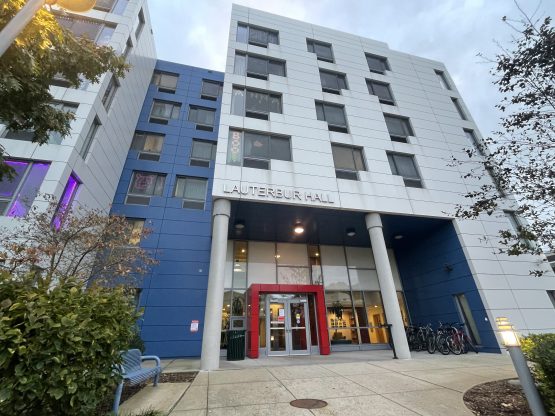
Only 14 out of the 33 campus residence halls at Stony Brook are equipped with carbon monoxide detectors, according to the school’s 2022 Annual Security and Fire Safety Report released on Sept. 30.
The buildings without detectors include Baruch, Benedict, Chapin, Dewey, Dreiser, Eisenhower, Greeley, Hamilton, Hand, Hendrix, Langmuir, Lauterbur, Mount, Schick, Stimson, Toscanini, Wagner, Whitman and Yang. Many of these dorms have communal kitchens for resident use.
According to Section 915 of the NYS Fire Code, “New and existing residential buildings and commercial buildings shall be provided with carbon monoxide detection and notification.” According to this section, carbon monoxide detectors are required where the dwelling unit has appliances, devices or systems that may emit carbon monoxide.
Amanda’s Law, passed in February 2010, also mandates that all residences within the state must have operable carbon monoxide detectors on each story where there is a sleeping area or source of carbon monoxide in dwellings with fuel-burning appliances, systems or an attached garage. This law was named in honor of Amanda Hansen, a teenager who lost her life to carbon monoxide poisoning in 2009.
Carbon monoxide detectors are under the jurisdiction of Environmental Health and Safety at Stony Brook University.
“At SBU, there is carbon monoxide detection installed in each residential facility that has a source of carbon monoxide,” Stony Brook University officials said in an email to The Statesman.
According to officials, Stony Brook University is in accordance with NYS Fire Code section 915, since all residential facilities on campus that contain a fuel-burning appliance have carbon monoxide detection installed. According to the code, a fuel burning appliance is considered any appliance, equipment, device, machine or system that may emit carbon monoxide.
“The 19 buildings referred to in the report do not have a CO source,” officials said.
Carbon monoxide is a colorless, tasteless, poisonous gas. It is produced by any fuel-burning appliance and can rapidly accumulate in the bloodstream, causing the displacement of oxygen. At high concentrations, carbon monoxide can become fatal within minutes.
According to the Center for Disease Control and Prevention, carbon monoxide is the leading cause of accidental poison. At least 430 people die every year in the U.S. from accidental carbon monoxide poisoning — an additional 50,000 people visit the emergency department each year because of it.
The only safe way to detect carbon monoxide is with a carbon monoxide detector.
According to HomeAdvisor, carbon monoxide and smoke detectors can range in price from $10 to $165.
However, over 50% of the residence halls are still not equipped with carbon monoxide detectors.
“It makes me really uncomfortable. I feel like that goes to show how badly the buildings need to be changed. A lot of them haven’t been re-done since the school was built,” Alexis Charles, a sophomore majoring in biology and psychology, said. “If we can have a fire-alarm, we should also have a carbon monoxide detector. I feel like that’s just as big of a risk.”
According to the Minnesota Department of Health, CO is produced whenever a material burns. Common sources of CO include fuel-burning appliances, but also devices including clothes dryers, which are present in every dorm.
“Even if there are no gas appliances on a property, it can still be a good idea to have carbon monoxide detectors,” said Daniel Kogan, a sophomore majoring in computer science. “Carbon monoxide can creep up from any fuel-burning devices, and it’s impossible to say with certainty that there will never be a fuel-burning device in a dorm.”
In colleges across the country, there are recurring instances of carbon monoxide poisoning.
In March 2022 at the University of Wisconsin-Milwaukee dorm, 17 students were sent to the hospital for treatment for carbon monoxide poisoning. The dorm did not have any alarms or detectors.
Similar incidents have occurred at the University of Miami, Roanoke College, University of Wisconsin Stevens Point and the University of Buffalo.
Despite not having carbon monoxide detectors present in most residential buildings, on the Stony Brook Department of Student Community Development website, for information about renting off-campus, the university states that “every room used for sleeping should have its own smoke and carbon monoxide detectors.”
Additionally, students can stop by Union 205 for a free smoke and carbon monoxide detector.
In the future, “if an appliance that produces carbon monoxide is installed [in a dorm], then yes, additional CO detectors will be installed to properly protect the occupants,” Stony Brook University officials said.
UPDATE: Due to an error on Stony Brook’s website, an earlier version of this article incorrectly stated that students can pick up CO detectors in the SAC. They are available in the Union.

















